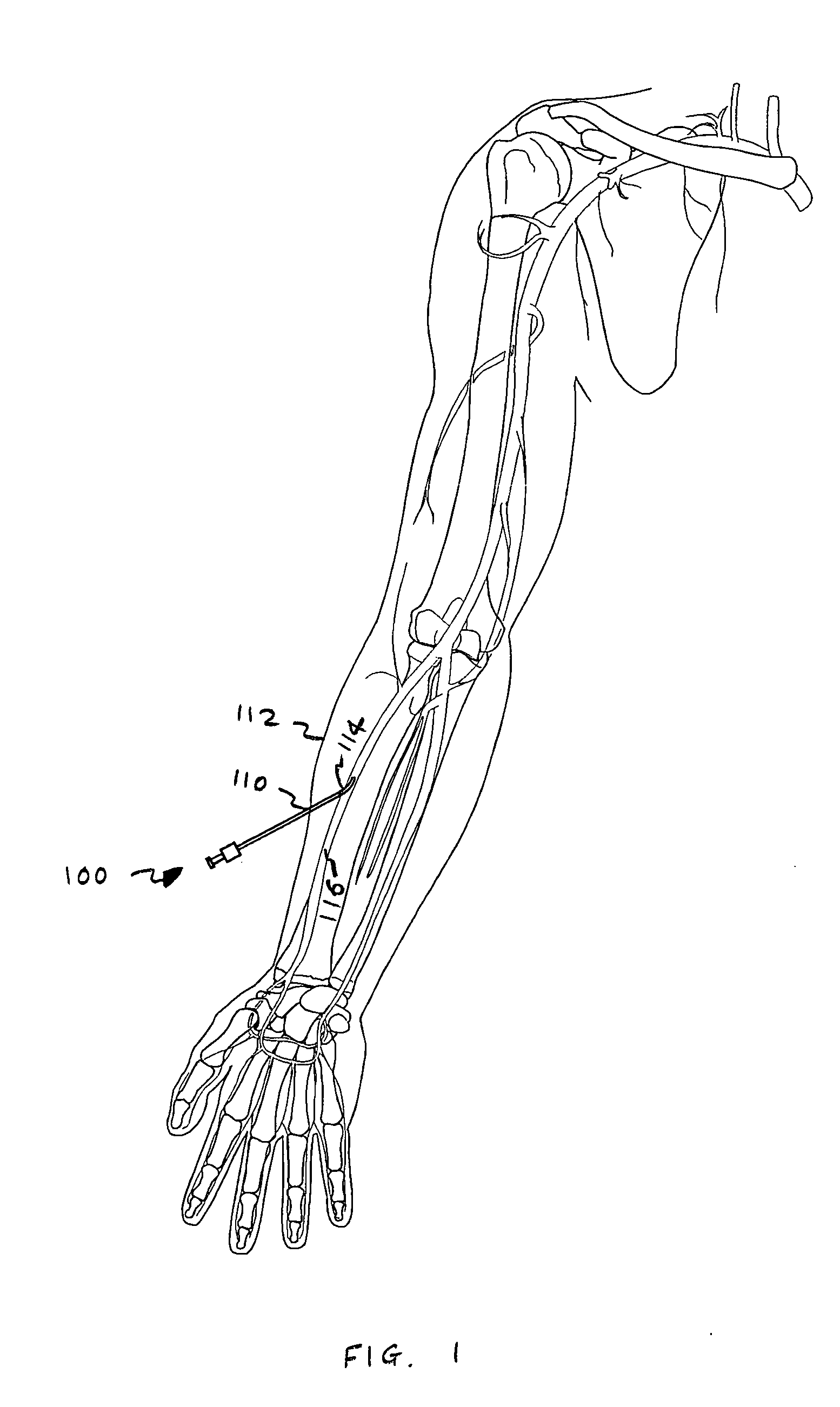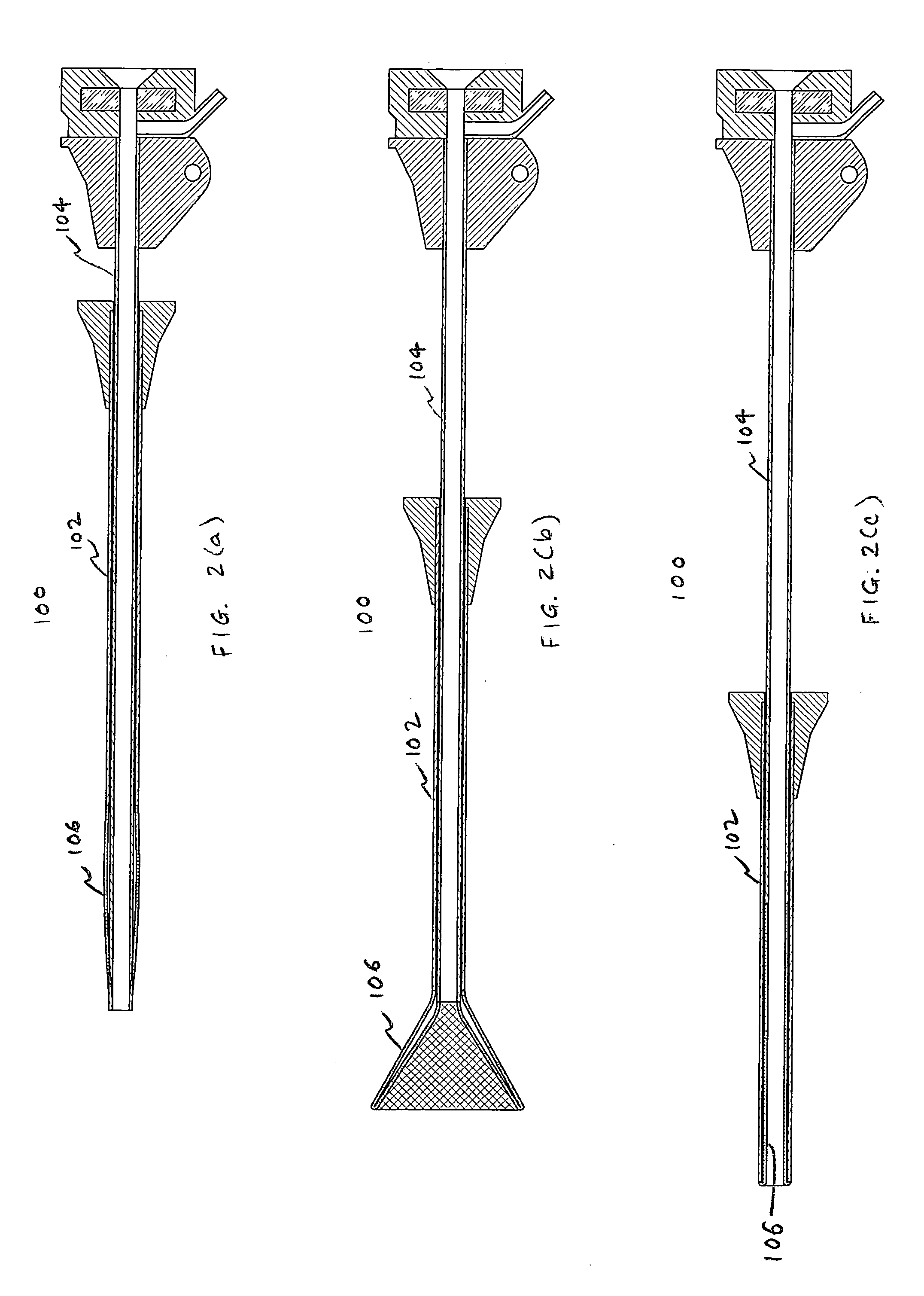Embolectomy capture sheath
a technology of capturing sheaths and obstructing materials, which is applied in the field of devices, can solve the problems of difficult collection and removal of obstructing materials, patient at risk of acute trauma, and obstructing material dispersal that is often a symptom of blood flow within the vessel, and achieves different flexural modulus, flexibility and kink resistance.
- Summary
- Abstract
- Description
- Claims
- Application Information
AI Technical Summary
Benefits of technology
Problems solved by technology
Method used
Image
Examples
Embodiment Construction
[0030] Referring to FIG. 1, there is shown an access device 100 of the invention being placed through a puncture site 110 in the skin 112 of a patient, and through a vessel puncture 114 of a body passage 116. FIGS. 2(a)-2(c) illustrate side sectional views of the access device 100 of the invention having a first outer flexible tube 102, a second inner, coaxial, flexible tube 104, and an expandable portion 106 disposed at a distal portion of the first and second tubes 102, 104. The expandable portion 106 may be taken from a first low-profile condition (FIG. 2(a)) to a second high-profile condition (FIG. 2(b)) and subsequently to a third low-profile condition (FIG. 2(c)) by the relative axial movements of the first and second tubes 102, 104 as further described below. The first low-profile condition is sized and configured to facilitate entry into a body conduit such as a vein or an artery. The second high-profile condition is sized and configured to facilitate the introduction of for...
PUM
| Property | Measurement | Unit |
|---|---|---|
| Length | aaaaa | aaaaa |
| Thickness | aaaaa | aaaaa |
| Diameter | aaaaa | aaaaa |
Abstract
Description
Claims
Application Information
 Login to View More
Login to View More - R&D
- Intellectual Property
- Life Sciences
- Materials
- Tech Scout
- Unparalleled Data Quality
- Higher Quality Content
- 60% Fewer Hallucinations
Browse by: Latest US Patents, China's latest patents, Technical Efficacy Thesaurus, Application Domain, Technology Topic, Popular Technical Reports.
© 2025 PatSnap. All rights reserved.Legal|Privacy policy|Modern Slavery Act Transparency Statement|Sitemap|About US| Contact US: help@patsnap.com



